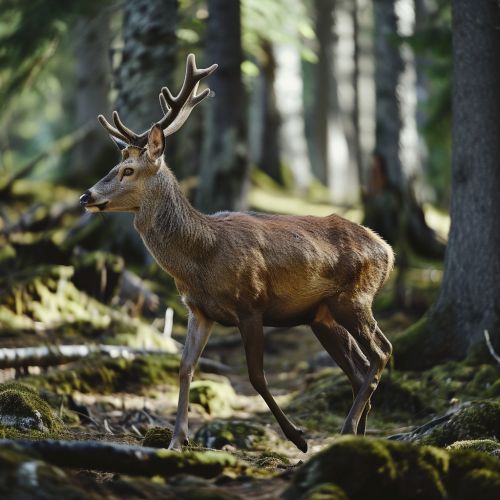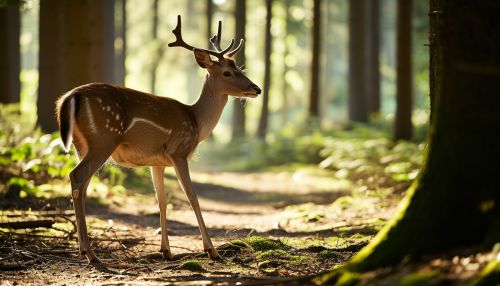Cervidae
Taxonomy and Evolution
The family Cervidae, commonly known as deer, is a large family of hoofed mammals that includes approximately 60 species distributed across multiple continents. The family is part of the order Artiodactyla, or even-toed ungulates, and is further divided into two main subfamilies: Cervinae and Capreolinae.
The evolution of Cervidae is a topic of ongoing research, but it is generally agreed that the family originated in the early Miocene epoch, approximately 20 million years ago. The earliest known deer-like animals, classified in the extinct subfamily Palaeomerycidae, were small, solitary forest dwellers. Over time, these early deer evolved into the diverse array of species we see today, adapting to a wide range of habitats and ecological niches.


Anatomy and Physiology
Cervids are characterized by their slender bodies, long legs, and the presence of antlers in most species. These antlers, which are typically grown by males, are unique among mammals in that they are shed and regrown annually. The process of antler growth and shedding is regulated by hormonal changes that correspond with the seasons, and is a topic of significant interest in the field of endocrinology.
In addition to their antlers, cervids are also notable for their specialized digestive systems. As ruminants, they have a four-chambered stomach that allows them to ferment plant material before digestion, enabling them to extract nutrients from plants that other animals cannot. This adaptation has allowed deer to thrive in a variety of habitats, from dense forests to open grasslands.
Behavior and Ecology
Cervids exhibit a wide range of behaviors, from the solitary habits of the moose to the complex social structures of the red deer. Many species are crepuscular, being most active at dawn and dusk, and all are herbivores, feeding on a variety of plant materials.
The ecological role of cervids is significant. As herbivores, they play a crucial part in shaping the vegetation of their habitats, and as prey species, they are a key link in the food chain. The impact of deer populations on their ecosystems is a major focus of ecology, and understanding this impact is essential for effective wildlife management.
Conservation and Management
Many species of deer are of conservation concern due to habitat loss, overhunting, and other human impacts. Conservation efforts for these species often involve habitat protection and restoration, as well as population management strategies such as controlled hunting and captive breeding programs.
At the same time, some deer species have adapted well to human-altered landscapes and are considered overabundant in certain areas. In these cases, deer management strategies may involve population reduction efforts, such as hunting or contraception, to prevent overgrazing and other negative impacts on the ecosystem.
